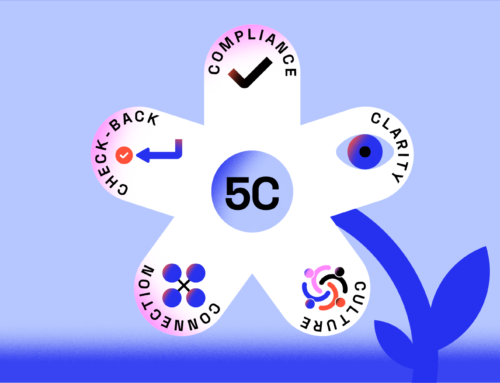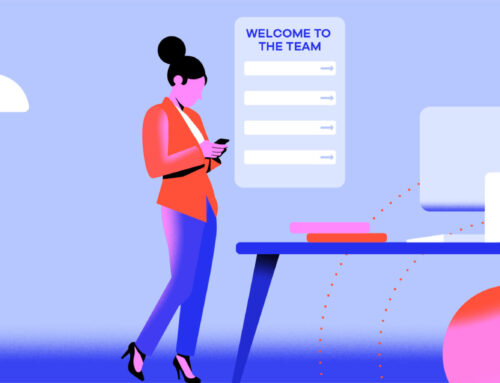Last Updated on November 5, 2021 – 7:46 am
Every HR manager’s dream hire is the one who fits hand-in-glove into an organization’s existing framework and workplace culture. It’s significant considering that 20 percent of US workers leave a new position within 45 days of employment. Yet, a fresh employee still needs to learn a thing or two about their new work environment. The way organizations facilitate this is to develop a new employee training plan.
However, implementing new employee training is more than merely following a predetermined template. Doing it this way eventually defeats the purpose, even though it’s a critical aspect of the talent management strategy of companies.
So, what are the core essentials of new hire training?
Why Your Company Needs to Invest in New Hire Training
Before running through your new employee training checklist, it’s crucial to understand how training helps new hires:
- To help them understand the proper functioning of a department and your company.
- To learn the appropriate guidelines and policies to enforce.
- To set up the computer systems with essential tools and technology.
- To impress the requirements of a position on new employees.
Comprehensive and practical employee training begins with a collection of new hire training checklists. Such checklists improve the chances of your onboarding experiences succeeding. Such checklists will span:
1. Before the new employee’s first day; 83 percent of the highest-performing organizations do this, according to the Aberdeen Group
2. The employee’s first day
3. One month after the new hire resumes
4. Three months after the new employee begins
The Right Way to Implement New Employee Training
Efficient onboarding practices help employee retention up to 91 percent (one year). These same practices keep up to 69 percent in one company for up to three years. Proper employee training practices involve the following:
1 – Design effective standard operating procedures (SOPs)
To provide adequate support to your new employees, it’s essential to prepare in advance of their arrival. Your team should prepare standard operating procedures for each job role.
The SOPs ensure that expectations for any role are as clear as daylight. It makes it easier to communicate to the new hire what their responsibilities are, enabling them to succeed in the role.
2 – Connect high performers to new employees
One of the best ways to give an employee a soft landing in your company is to arrange for them to work alongside a high-performing employee or their line manager for a few days. The line manager will point them to everyday tasks, projects, and highly rewarding ways to be effective in their role.
By injecting some personality into the onboarding process, the new hire will find an avenue to ask important questions at their own pace and experience practical answers. Besides core responsibilities and tasks, this is probably the best time and place to include training on specific company culture, mission, and values. Your new employee training schedule should comprehensively cover these areas so that the new hire can have a compass to direct their purpose and decisions.
3 – Provide the new employee with a structure and time
Every new employee needs to discover themselves within your organizational structure eventually. Your job is to give them the structure and time that promotes self-discovery. An onboarding map will help them to play their role to the hilt.
You should also provide a feedback loop to enable them to report all they are learning. This process allows the human resources department to confirm that the transfer of knowledge is going as expected.
With such a structure in place, there’s an even more excellent opportunity for exploration and interpersonal connection.
4 – Technology and automation are helpful
When developing and administering a new employee training template, tech tools are handy. They save time in administrative procedures that are part of bringing new hires up to speed.
Relieving new employees of undue paperwork allows them and their supervisors to focus on mentorship, training in core responsibilities, and significant aspects of company culture.
When using technology, always remember to arrange topics in a way that suits all types of learners, such as audio, kinesthetic, reading/writing, and visual. Use training management software that provides access to audio and video resources relevant for the job role. For instance, accompany each video tutorial with a reading segment covering the main details of the video. It reinforces the content, and employees can take notes in a format they deem suitable.
5 – Blended coaching works; use it!
Blended coaching is highly effective in new employee training and onboarding. After the delivery of small chunks of vital digital modules, new employees can exchange notes by virtual collaboration. The notes should focus on how their newfound knowledge has helped them.
One of the most significant benefits of virtual collaboration rooms is that they help the new hire to forge defining relationships and team spirit. Besides, it causes an employee to have the confidence to perform in the new role. In the words of HR Geckos’ Jay Polaki, “social learning enables meaningful engagement.”
Conclusion
The effectiveness of new hire training and onboarding begins with developing a new employee training plan template. The template will be adaptable to various departments and help in designing their new employee training schedule. Achieving a robust new employee training program works best when employees enjoy the training. Therefore, it’s essential to incorporate breaks and games, besides incorporating opportunities for rewards and socialization.






Leave A Comment